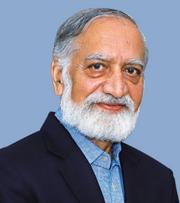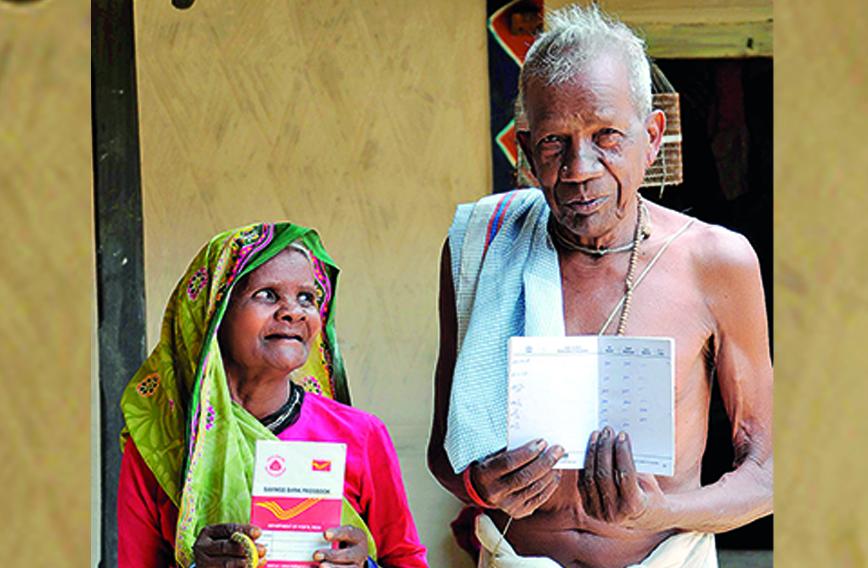
KIRAN KARNIK
DESPITE the ambiguity that the heading might lead to, this is not about the Communist or other Leftist parties as the force behind a government, as in UPA-1. Here, we mean those literally left behind amidst population shifts. Previous editions of this column have pointed to internal migration — mainly from the east to the south, west and the NCR — caused by a combination of demographic and economic factors (“Demography-driven migration”, Civil Society, June 2022) and some of the consequent issues (“Being alone: The pain of one”, Civil Society, June 2023). Looking ahead, one can predict the amplification of the problems.
At first glance, economic growth rates in some of the states in the east seem robust, but these are on a much smaller base. Comparatively higher birth rates in the east result in a double whammy: the lower absolute growth is further negatively impacted by the greater population increase. Consequently, the per capita income is low: in UP and Bihar it is a third and a fifth, respectively, of that in the southern states. Despite the seemingly robust growth rates, employment opportunities in these poorer states are rather limited, especially when compared with the burgeoning population. The combination — lower per capita income and lack of jobs — is a major push factor, promoting outward migration.
Simultaneously, the booming economies in the south and west are creating employment opportunities at all levels. This, and the much higher income levels are a pull factor for young people from the east. Amplifying the pull is the fact that lower population growth is beginning to result in worker shortages in some areas. While hard data is difficult to come by, anecdotal and experiential accounts indicate that the push and pull factor together are resulting in an increasing flow of migrants.
As young people join this human flow, in ever-greater numbers, their dependants are left behind. At one time, it was primarily males who moved. Now, for a variety of reasons — including job opportunities for women — many women too are migrating, generally along with their husband or soon after he has settled in the new location. Further, as recognition of the importance of education spreads, more migrants are now moving their children to schools in their new urban abode. This is amplified by the perception that schooling in the city is far superior to that available in their home village. Consequently, it is only the elders who are left behind in the village.
With no job — and, often, little capability to take up any demanding work — the elders (parents) are economically dependent on their children. They are part of what used to be called the “money order economy” (money transfers are now done through more efficient means), with their very survival predicated on money transfers from faraway children. The combination of human relationships, family ties, and social norms ensures that this system works in almost all cases. However, there are some cases when recalcitrant children — for whatever reason — do not send any money. The elders (sometimes, just a single surviving parent) are then dependent on the largesse of some better-off relative; when such support is not forthcoming, s/he is left destitute.
In future, with growing migration, increasing costs, breakdown of many social norms, and increased longevity, one can foresee this becoming a major issue. The number of poor and destitute elders, with little economic support, is set to become huge. Fast economic progress, one hopes, will mitigate economic hardship to some extent. However, there is another major problem. Even amongst those who are better off because they do receive money regularly from migrant children or have some independent financial wherewithal, there are issues beyond money. Sooner or later, practically all elders need some form of physical support for mobility. Going anywhere — to the medical centre, for example — requires assistance. Some organizations try to minimize the need to travel for healthcare by taking medical staff to villages and homes (HelpAge India, for example, operates 160 Mobile Health Units that provide a range of health services, including medicines, at the doorstep). Technology is now enabling remote healthcare, including diagnostics and consultation, via tele-medicine.
Human needs, though, are not limited to physical needs. Mental and emotional health are as important and, in fact, influence overall well-being. This under-recognized problem of emotional health is a growing problem which afflicts people across class, gender, and age. It is particularly severe for elders, many of whom have little interaction with others. Their own family often ignores them, even in multi-generational households, as the young are busy with work and their own lives. The problem is now prevalent in both rural and urban areas: working couples and busy children have no time for the elder generation. In rural India, the situation regarding human interaction has worsened with migration, which often leaves only the elders in their village homes (government data indicates that as many as 18 percent of elders live alone or with just their spouse). The resulting loneliness creates and amplifies mental health problems.
It is fashionable to talk of Gen Z — or newer variations — being distinctive. It is time to also focus on the “left behind” generation — the many millions of elders living a lonely life, often with little financial, caregiver, or emotional support — as one which deserves attention. NGOs are already doing quite a bit and they will, doubtless, do more. Governments — central and state — need to step in and mount large programmes, including substantially larger pensions, special wards and attention in hospitals, far better primary healthcare (including free medicines), and a strong focus on mental health through special counsellors and psychiatrists. Elders, 130 million-plus (over 300 million by 2050), deserve this.
Elders have given us — as individuals and as a country — much and made many sacrifices. It is now payback time.
Kiran Karnik is a public policy analyst and author. His most recent book is ‘Decisive Decade: India 2030, Gazelle or Hippo’
Comments
-

ananda - Sept. 27, 2023, 1:18 p.m.
Good points. But there has to be some data backing such opinion pieces. I am sure APU's State of Working India etc will have relevant data.




